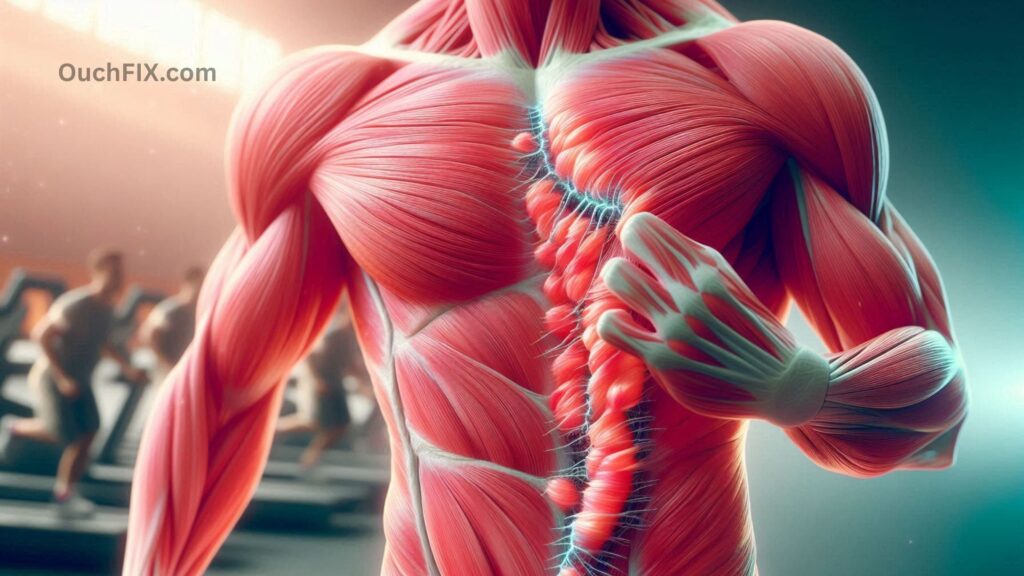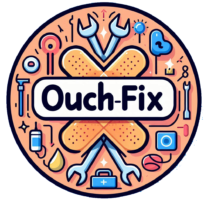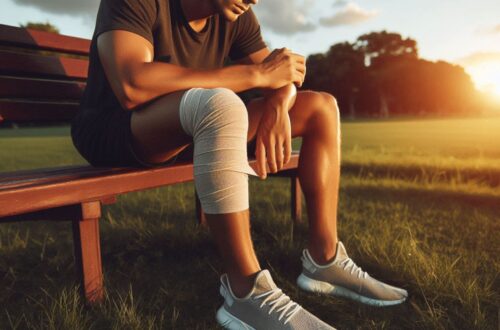Getting injured is frustrating—whether it’s from a sports mishap, a fall, surgery, or even overtraining. Suddenly, your daily routine is disrupted, and recovery feels like it’s dragging on forever. But here’s the truth: with the right exercises at the right stage of healing, you can speed up recovery, reduce stiffness, regain strength, and safely get back to doing what you love.
This guide will walk you through the best exercises for rapid injury recovery, explain when and how to start moving again, and give you practical tips for avoiding setbacks. Whether you’re dealing with a sprain, muscle strain, surgery rehab, or general aches, you’ll find actionable advice here.
Why Exercise Is Key to Faster Healing
Think of exercise as your body’s built-in repair system. Movement increases blood flow, which delivers oxygen and nutrients to the injured area. It also prevents stiffness, maintains joint mobility, and helps your muscles stay strong while you recover.

Benefits of Moving After an Injury:
- Boosts circulation for faster tissue repair
- Reduces scar tissue buildup
- Prevents muscle wasting (atrophy)
- Improves flexibility and mobility
- Enhances mood and mental resilience
👉 Takeaway: The goal isn’t to push hard—it’s to move smart.
Rest vs. Movement: Finding the Sweet Spot
One of the most common recovery mistakes is either overdoing it or not moving at all. Too much rest weakens muscles and makes joints stiff. Too much activity can worsen the injury.
The sweet spot is active recovery: gentle, controlled movement that promotes healing without strain.
Pro tip: Listen to your body. Mild soreness is okay, but sharp pain is a warning sign.
How Your Body Heals
Your body follows a predictable path when repairing an injury:
- Inflammation Stage (first few days):
- Your body goes into repair mode. Swelling, redness, and pain are normal.
- Rest, ice, and elevation are crucial here.
- Repair Stage (days to weeks):
- Damaged tissue begins healing.
- Gentle exercises help restore mobility and prevent scar tissue stiffness.
- Remodeling Stage (weeks to months):
- New tissue strengthens.
- Gradual resistance training helps rebuild strength and function.
When to Start Exercising After Injury
Timing depends on the type and severity of your injury.

- Minor sprains/strains: Begin light movement after 1–3 days.
- Moderate injuries: Wait 1–2 weeks, starting with mobility work.
- Post-surgery: Follow your surgeon or physical therapist’s timeline.
⚠️ Always consult your doctor or PT before beginning. Pushing too early can delay healing.
Exercises for Different Types of Injuries
Muscle Strains or Sprains
- Begin with RICE (Rest, Ice, Compression, Elevation).
- Progress to gentle stretching (hamstring stretch, calf raises).
- Use resistance bands for light strengthening.
Joint Injuries (Shoulders, Knees, Ankles)
- Focus on mobility exercises (circles, pendulum swings).
- Gradually add bodyweight or resistance training.
Back or Spine Injuries
- Strengthen the core with pelvic tilts, bird-dogs, or dead bugs.
- Avoid heavy lifting until cleared by your doctor.
Post-Surgical Recovery
- Often starts with passive movement (a therapist moves your limb for you).
- Progresses to active, then resisted exercises.

Also Read: How can Stretching Routines Enhance Post‑Exercise Recovery?
Exercises for Different Injuries
Here’s how to approach some common injuries:
- Muscle Strains or Sprains: Start with RICE (Rest, Ice, Compression, Elevation). Then try gentle stretches or resistance band exercises.
- Joint Injuries (like shoulders or knees): Work on mobility first, then add light strength training.
- Back or Spine Injuries: Focus on core strength with moves like pelvic tilts or bird-dogs. Skip heavy lifting early on.
- Post-Surgery: A pro will guide you. You might start with passive movements and slowly work up to active ones.
Exercises for Each Healing Stage

Acute Phase:
- Ankle pumps
- Arm swings
- Deep breathing
Sub-Acute Phase:
- Gentle stretching
- Pendulum exercises
- Mobility drills
Rehabilitation Phase:
- Resistance bands
- Bodyweight exercises (squats, wall push-ups)
- Light weights
Return-to-Activity Phase:
- Sport-specific drills
- Balance training
- Agility work
Low-Impact Exercises to Try
Low-impact movement reduces stress on your joints while keeping you active:
- Swimming / Water Therapy – Buoyancy reduces joint stress.
- Walking – Improves circulation and joint mobility.
- Stationary Biking – Safe cardio for lower-body rehab.
- Yoga or Pilates – Enhances flexibility, breathing, and mental calm.
Strengthening Without Risking Re-Injury
- Resistance Bands – Rows, presses, leg extensions.
- Isometric Exercises – Wall sits, planks (hold without moving joints).
- Core Training – Pelvic tilts, bridges, dead bugs to protect your spine.
👉 These exercises build strength gradually without overstressing injured areas.
Also Read: What Recovery Techniques Reduce Muscle Soreness Effectively?

Stretching the Right Way
Stretching keeps muscles flexible and prevents stiffness.

- Dynamic Stretching (before exercise): Leg swings, arm circles.
- Static Stretching (after exercise): Hamstring holds, quad stretches.
- Targeted Recovery Stretches:
- Hamstrings → back pain relief
- Quads → knee recovery
- Shoulder circles → rotator cuff healing
Rule of thumb: Mild tension = okay. Sharp pain = stop.
Why Physical Therapy Is a Game-Changer
A physical therapist creates a personalized recovery plan and helps you:
- Avoid reinjury
- Progress safely
- Track milestones
Even if you can’t attend sessions, many PTs provide at-home exercise plans and telehealth consultations.
Cool Tools for Recovery
- Foam Rolling: Loosens tight muscles and boosts blood flow. Go easy and don’t roll right FIFA on the injury.
- Compression Gear or Braces: These stabilize joints and improve circulation.
- Ice and Heat: Ice calms swelling; heat relaxes muscles. Always use a towel to protect your skin.
Tools & Gadgets for Faster Recovery

- Foam Rollers: Release tight muscles, increase circulation.
- Compression Gear: Supports joints, reduces swelling.
- Braces or Supports: Add stability during exercise.
- Ice & Heat Therapy: Ice for swelling; heat for stiffness.
Healing isn’t only physical—it’s psychological.
- Tackle fear of re-injury by starting slow and building confidence.
- Set small, achievable goals to track progress.
- Stay motivated with journaling or fitness apps.
Nutrition & Hydration for Healing
What you eat directly impacts recovery speed.
- Protein: Rebuilds muscle (chicken, fish, beans).
- Vitamin C: Supports collagen repair (citrus fruits, bell peppers).
- Zinc: Boosts tissue repair (nuts, seeds, seafood).
- Omega-3s: Reduce inflammation (salmon, walnuts).
- Hydration: Water keeps cells nourished and speeds healing.

Also Read: How to Safely Recover from Minor Joint Injuries at Home?
Common Mistakes to Avoid
- Neglecting mental health
- Ignoring pain signals
- Skipping warm-ups
- Rushing into high-intensity exercise
- Comparing your recovery to others
When to Stop and Call Your Doctor
Seek medical attention if you notice:
- Severe or worsening pain
- New swelling or redness
- Dizziness or nausea during exercise
- Fever or signs of infection
Conclusion
Recovering from an injury takes patience, but the right approach can cut down recovery time significantly. By combining low-impact exercise, gradual strengthening, proper stretching, and good nutrition, you’ll support your body’s natural healing process. Pair that with a positive mindset and guidance from a physical therapist, and you’ll bounce back stronger than ever.
👉 Call to Action: If you’re currently healing from an injury, start with gentle movement today. Talk to your doctor or PT, choose a few safe exercises, and celebrate every milestone on your road to recovery.
FAQs About Injury Recovery Exercises
Q1. How soon should I exercise after an injury?
Minor injuries may allow movement within days, but always consult a doctor first.
Q2. What exercises are safest for knee recovery?
Walking, swimming, and resistance band work are excellent low-impact options.
Q3. Can stretching speed up healing?
Yes—when done gently, stretching reduces stiffness and improves mobility.
Q4. Should I use heat or ice for recovery?
Ice for swelling/inflammation; heat for stiffness or muscle relaxation.
Q5. How do I know if I’m overdoing it?
If pain increases or swelling worsens, stop and rest.
 Skip to content
Skip to content






